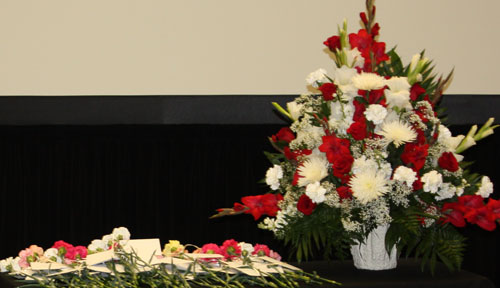On Friday, April 19, UNMC students and faculty gathered to say a final good-bye to the people who, by donating their bodies, allowed UNMC medical, physician assistant and physical therapy students to take the first step into the mysteries of anatomical study.
The memorial is an annual event, conducted with all the solemnity and pomp of any end-of-life service. Students speak, scripture is read, carefully selected music plays, and family members of the deceased are invited to say a final goodbye, as well.
Chance Unger, the class president for first-year physical therapist students, is one of the three class officers who planned the event, which is completely student-run.
|
|
The main focus of the service, Unger said, is to respectfully extend thanks to the families of the people who donated their remains.
“For the families, this brings a really direct sense of closure,” he said. “And it’s a good way for the university to give back to the families, to thank them.”
For students, Unger said, the memorial service provides a sense of closure as well. Groups of four to five medical, PA and PT students work with a single cadaver all year. Although students are tested on all the cadavers, in many ways the assigned cadaver becomes a partner on the students’ journey.
“There can be sort of a desensitization process” as students work with cadavers throughout the year, Unger said. “This memorial service can re-sensitize the students. I really like how the service allows us to key in on how soulful these people were.
“One of the things first in my own heart is the beauty of sacrifice and the implications of these people’s gift,” he said. “They are helping to save the lives of the men, women and children that these medical students will be helping or performing surgery on. It’s beautiful, really.”
Faculty member Kim Latacha, Ph.D., has not missed a memorial service at any institution in 16 years as a student or faculty member.
“To get to see the students express themselves, though words, music and poetry, is very moving,” she said. “This is an important ceremony – it’s a highlight of the year.”
